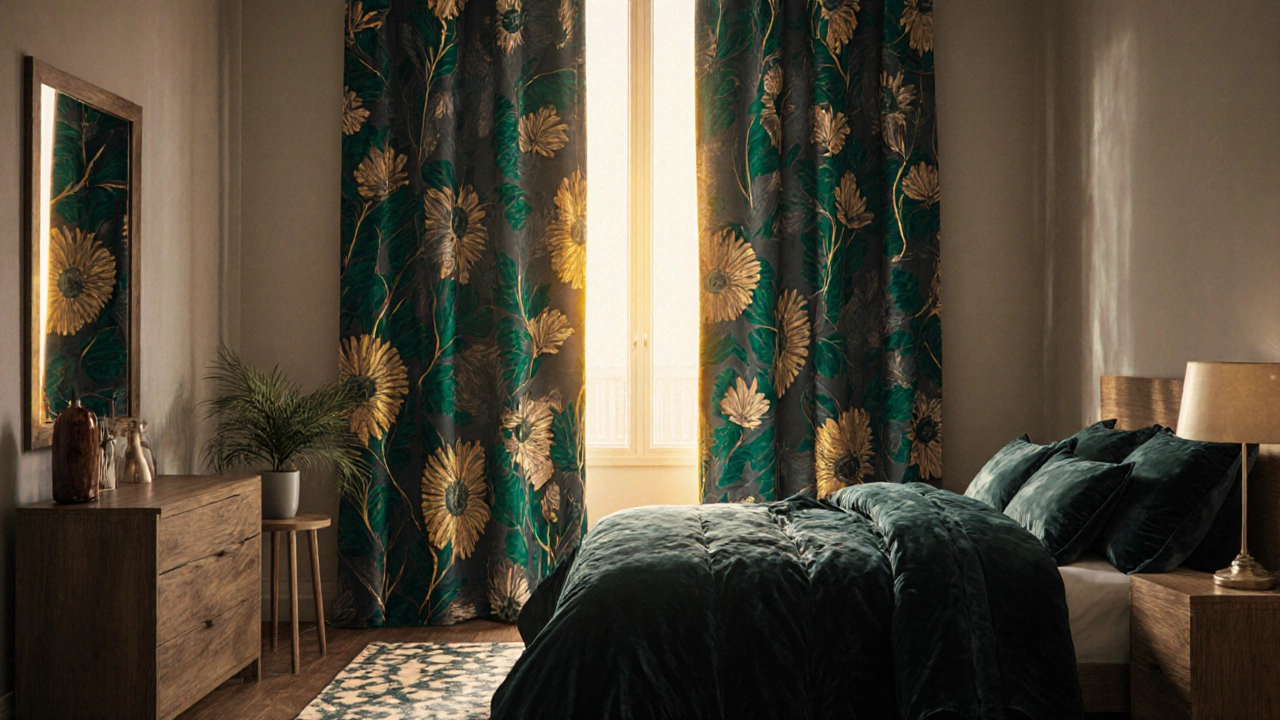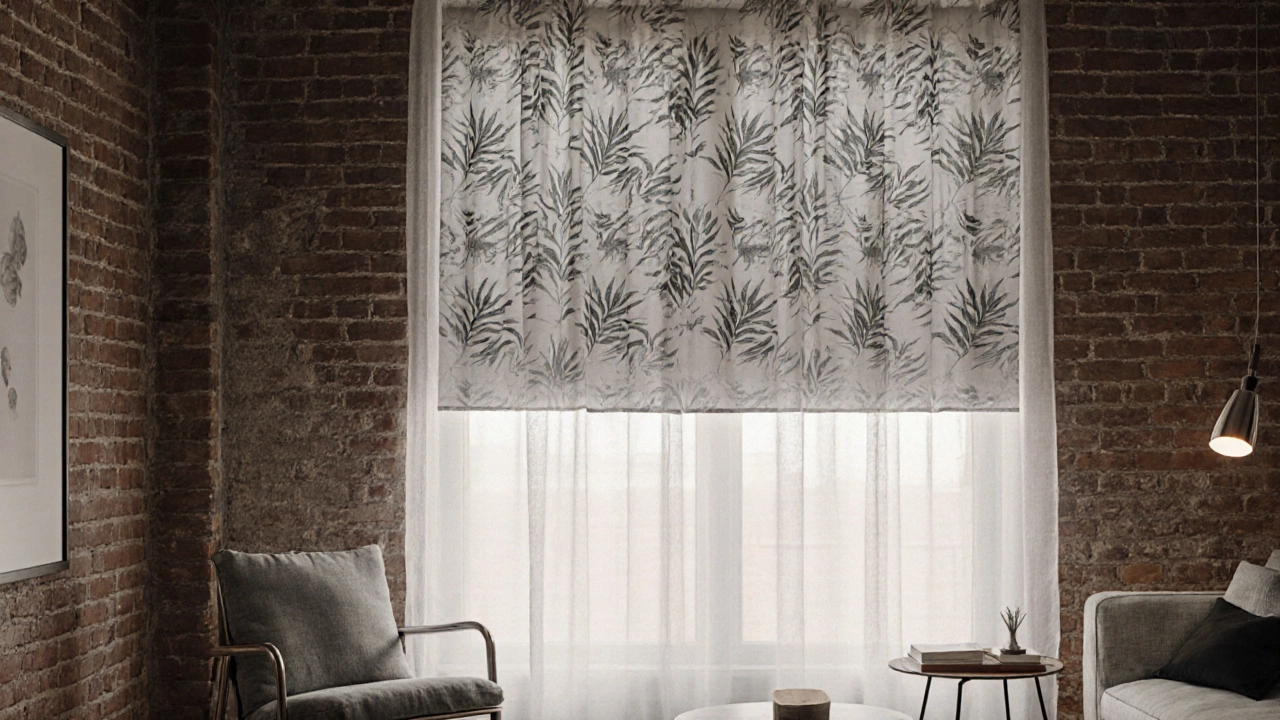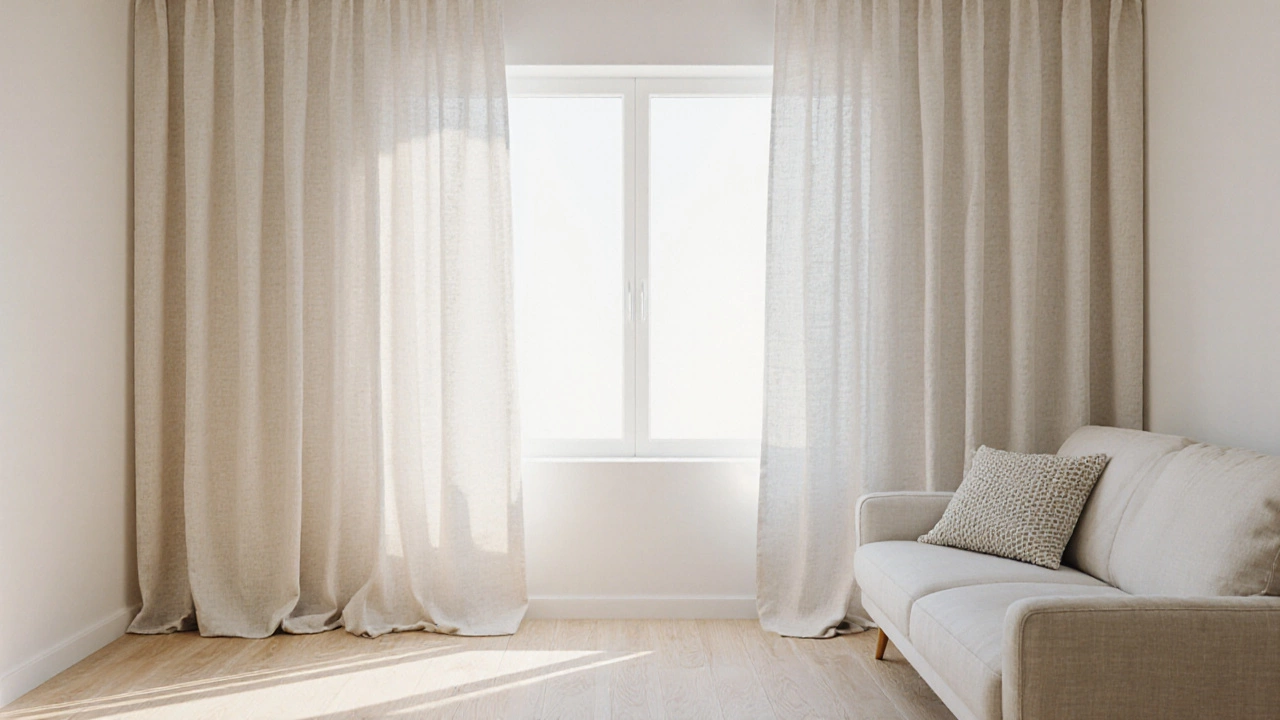Curtain Style Selector
Find Your Perfect Curtain Style
Answer a few questions about your space to determine whether plain or patterned curtains will work best for you.
1. Room Size
2. Room Style
3. Lighting Conditions
4. Maintenance Needs
5. Your Favorite Color Palette
Key Takeaways
- Plain curtains create a calm backdrop and work well in minimalist or small rooms.
- Patterned curtains add visual interest and can become the focal point of a space.
- Match the curtain choice to the room’s style, lighting, and color palette for cohesive look.
- Consider fabric weight and maintenance - darker prints may show wear faster.
- Mixing textures (e.g., linen with velvet) lets you blend plain and patterned without clashing.
When deciding how to dress your windows, Curtains are a functional and decorative element that controls light, privacy, and adds style to a room. The big question many face is whether to opt for plain or patterned designs. Both options have strengths, but the right pick depends on the room’s purpose, your personal taste, and practical factors like upkeep.
Understanding the Two Main Categories
Plain curtains are solid‑color or subtly textured window treatments without obvious motifs. They rely on color, fabric, and drape to make an impact.
Patterned curtains feature printed or woven designs-florals, geometrics, stripes, or abstract graphics-that become a visual statement.
Factors to Weigh Before You Choose
Room size and perceived space - Light‑colored plain curtains can make a cramped room feel larger, while bold patterns can either open up a space (by drawing the eye outward) or make it feel busier.
Existing décor style - A minimalist or Scandinavian interior usually benefits from plain, neutral drapes. Traditional, eclectic, or boho looks thrive on patterned fabrics that echo other elements.
Lighting conditions - In low‑light rooms, plain curtains in lighter shades brighten the area. In bright, sun‑filled rooms, patterned curtains can reduce glare without sacrificing style.
Fabric type - Different fibers react differently to patterns. Linen offers a natural, breathable texture that shows subtle prints beautifully. Heavier Velvet adds drama and works well with large‑scale patterns or solid colors.
Color theory - Plain curtains let you experiment with bold wall colors while keeping the window area neutral. Patterned curtains can pull multiple hues together, linking disparate colors in the room.
Pros and Cons of Plain Curtains
Pros
- Creates a clean, uncluttered look that adapts to changing décor.
- Easy to pair with other textiles-cushions, rugs, and artwork.
- Generally simpler to clean; solid colors hide small stains better than high‑contrast prints.
- Less likely to feel dated; classic hues like white, beige, or deep navy stay timeless.
Cons
- May appear bland if the rest of the room lacks personality.
- Limited ability to act as a focal point; you must rely on other décor elements for drama.

Pros and Cons of Patterned Curtains
Pros
- Instantly injects visual interest and can become the room’s centerpiece.
- Helps tie together mismatched colours or patterns elsewhere in the space.
- Wide variety of scales-from tiny repeats to bold oversized graphics-offers flexibility.
- Can mask imperfections in the window frame or uneven installation.
Cons
- Risk of overwhelming a small or already busy room.
- Wear and fading become more noticeable on high‑contrast prints.
- May clash with later décor changes; a bold pattern can limit future colour swaps.
How to Choose the Right Option for Your Home
Use the following quick decision flow:
- Assess the room’s dominant style. If it’s minimal, lean plain; if it’s eclectic, consider pattern.
- Measure the window. Large windows can handle bold patterns, while petite windows often look better with simple solids.
- Check the colour palette. If walls are neutral, you can safely add pattern; if walls already feature strong colours, plain curtains keep balance.
- Think about maintenance. Households with kids or pets may prefer plain fabrics that hide minor stains.
- Test samples. Hold a swatch up to the wall at different times of day to see how light affects it.
Styling Tips: Blending Plain and Patterned Elements
You don’t have to choose one extreme. Here are three hybrid approaches:
- Solid backdrop + patterned accessories - Use plain curtains and add patterned throw pillows, a rug, or art that picks up the same colour family.
- Patterned border + plain panel - Some manufacturers offer curtains with a solid center and a patterned hem. This gives a hint of design without full‑scale print.
- Layered look - Hang sheer plain curtains underneath a bold, heavier patterned panel. The sheer layer softens the pattern while still allowing privacy.

Maintenance Considerations
Plain curtains often hide dust and minor spots, making routine vacuuming sufficient. Patterned curtains, especially those with light backgrounds, may need more frequent spot‑cleaning to keep the design crisp.
Regardless of choice, always follow the manufacturer’s care label. Natural fibers like linen may shrink when machine‑washed; synthetic blends usually tolerate low‑temperature cycles. Consider professional cleaning for delicate velvets or intricate woven motifs.
2025 Home‑Decor Trends for Curtains
Design forecasts for 2025 point to two clear directions:
- Biophilic patterns - Leafy, organic prints that echo nature are gaining popularity. Pair them with plain linen for a balanced, calming vibe.
- Monochrome solids - Deep charcoal, midnight blue, and warm ivory are trending as bold, neutral bases. They work well in minimalist interiors and provide a canvas for colourful accessories.
When you align your curtain choice with these trends, you’ll enjoy a contemporary look that stays fresh for years.
Quick Comparison: Plain vs Patterned Curtains
| Attribute | Plain Curtains | Patterned Curtains |
|---|---|---|
| Visual Impact | Subtle, creates calm backdrop | Bold, becomes focal point |
| Ease of Matching | Fits virtually any colour scheme | Needs coordinated palette |
| Perceived Room Size | Can make space feel larger | Large‑scale prints may shrink view |
| Maintenance | Stains less visible | Patterns fade/spot‑show over time |
| Trend Longevity | Timeless, rarely feels dated | May feel trend‑specific |
Final Thoughts
There’s no one‑size‑fits‑all answer. If you crave a serene, adaptable backdrop, plain curtains are the safer bet. If you want to inject personality and tie together a vibrant palette, patterned curtains can do the heavy lifting. Assess your room’s scale, style, lighting, and daily life, then let those factors guide your decision.
Can I use patterned curtains in a small bedroom?
Yes, but choose a subtle, small‑scale print and keep the colour palette light. The pattern adds interest without overwhelming the limited space.
Do plain curtains look boring?
Not if you play with texture, length, and fabric. A floor‑to‑ceiling linen panel in a soft ivory can feel luxurious and still stay minimal.
What fabric works best for patterned curtains?
Cotton blends and lightweight polyester reproduce sharp prints well and are easy to care for. For a richer feel, choose a silk‑like satin with a subtle sheen.
Should I consider the direction of the pattern?
Horizontal stripes can make a room feel wider, while vertical motifs add height. Align the pattern’s direction with the visual effect you want.
How do I clean patterned curtains without ruining the print?
Spot‑clean with a mild detergent, avoid harsh bleaching, and if machine‑washing, use a gentle cycle with cold water. Air‑drying preserves colour vibrancy.
